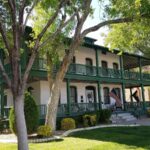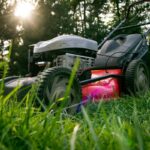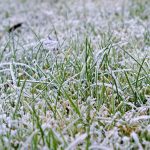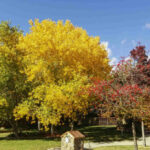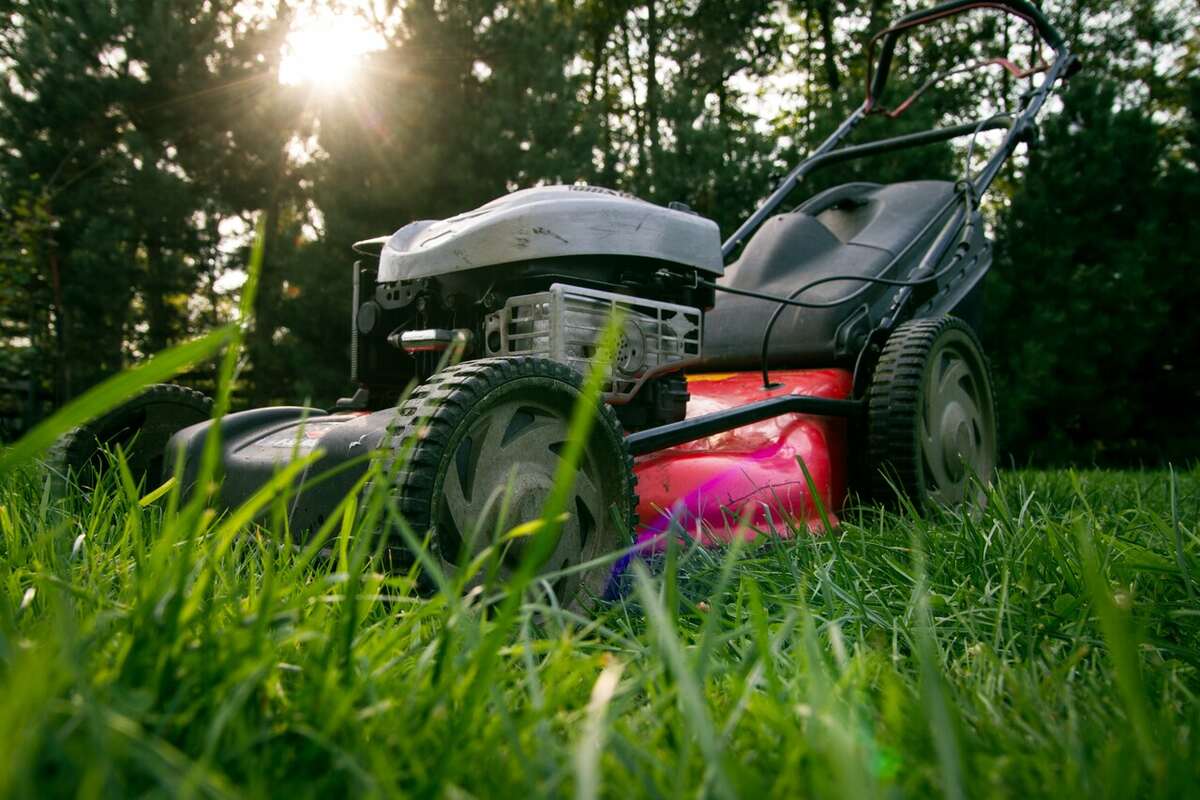
Welcome to El Paso, the Sun City, where the desert meets the mountains, and the warm, arid climate is a defining feature of the region. As spring arrives and the temperatures rise, homeowners in El Paso know it’s time to start searching for spring lawn care tips to help their lawns thrive.
The unique climate and water conservation rules in this part of Texas can make maintaining a lush, healthy lawn challenging. Still, with the right strategies and techniques, achieving a beautiful and vibrant yard that is the envy of the neighborhood is possible. In this article, we’ll share some expert tips and advice for taking care of your lawn this spring, so let’s dive into it!
1. Clear Yard Debris
Spring is the perfect time to start fresh with your lawn in El Paso, especially when it comes to cleaning it up. After winter, fallen leaves, branches, and other debris can accumulate on your lawn, detracting from its appearance and harming its health.
That is because leaving debris can suffocate the grass, preventing it from getting the air and sunlight it needs to thrive. Additionally, fallen leaves and branches can attract pests such as rodents, insects, and even snakes, which can be hazardous for you and your lawn. Wet debris can also lead to mold.
Tip: On average, a professional yard cleanup costs $280, but you can DIY if you have a rake, lawn sweeper, garden bags, and other tools.
2. Know Your Grass
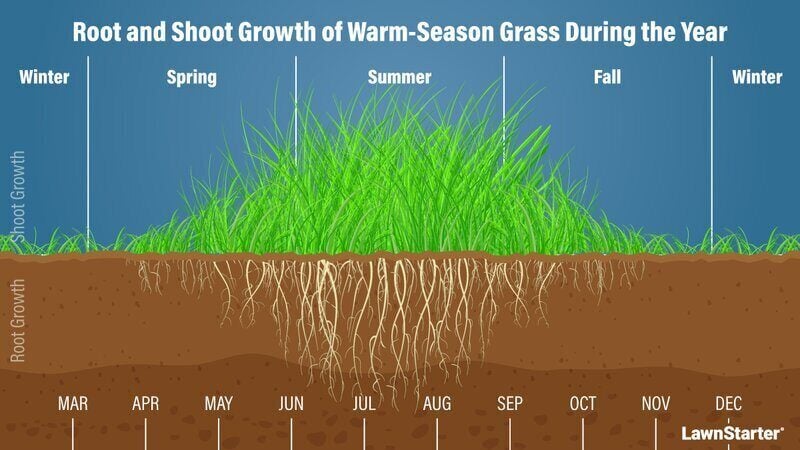
Knowing your grass type is essential for proper lawn care during spring. Different grasses have different growth cycles and, therefore, require different maintenance schedules. Once you know your grass type, you can tailor your lawn maintenance routine to meet its specific needs.
The types more common in El Paso are warm-season grasses like buffalograss, Bermuda, and Zoysia. This means they thrive in hot weather and go dormant in cooler temperatures.
However, if you have a less common grass type, like Texas bluegrass, which is a cool-season hybrid of Kentucky bluegrass and native Texas bluegrass, it will require a different routine than warm-season grasses. Although Texas bluegrass can technically be used in El Paso, it may be more of a challenge to maintain.
Pro Tip: If you’re unsure what type of grass you have, there are a few ways to find out. You can take a picture of your lawn or bag some clippings and bring it to a local nursery, landscaping company, or Cooperative Extension office.
3. Understand Your Soil
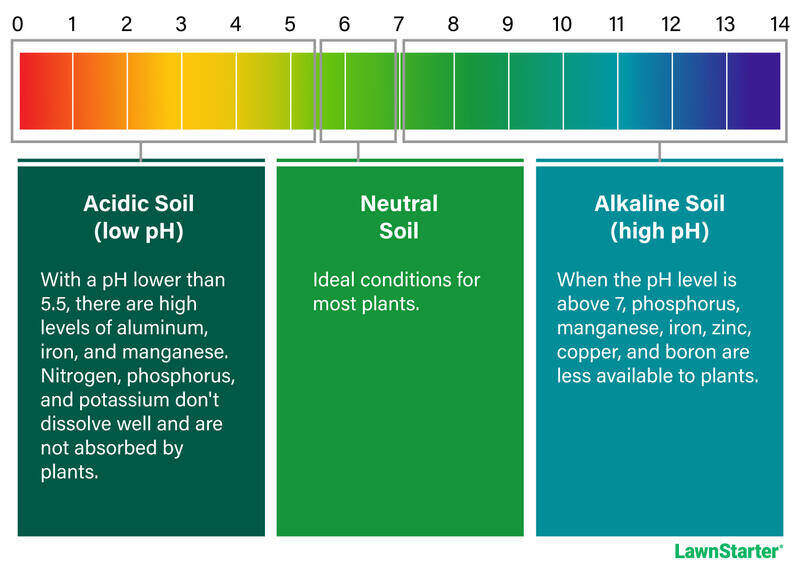
Soil tests reveal essential information about your lawn’s health, including nutrient deficiencies, pH, and salt levels. Understanding your soil’s composition is crucial in maintaining a healthy lawn, and it is recommended to perform a soil test at least every three years.
Important: The soil in El Paso, Texas, is typically sandy and alkaline, with a pH level of around 8. This can pose some challenges for lawn care as it does not retain water well, making it difficult to keep plants and grass hydrated. The alkaline nature of El Paso’s soil can also make it difficult for plants and grass to absorb nutrients when you apply them in spring.
To improve water drainage, you can topdress your lawn with the following:
- Compost
- Peat moss
- Wood ash
- Humus
And to correct alkaline soil, you can apply the following:
- Elemental sulfur
- Aluminum sulfate
- Iron sulfate
4. Feeding Time
Fertilizing your lawn in the spring is vital in maintaining a healthy and vibrant lawn in El Paso, Texas. After conducting a soil test, you will be equipped with information on the best way to fertilize your lawn.
If you have warm-season grass like Bermuda or Zoysia, the best time to fertilize is when it’s actively growing, during mid-spring through summer in El Paso. Then, it’s recommended to fertilize again in the fall for extra energy before the grass goes dormant. On the other hand, Texas bluegrass should be fertilized in the fall.
Tip: Splitting the fertilizer into at least two smaller applications is best as it allows for better absorption and reduces the risk of fertilizer burn.
5. Mastering the Art of Watering
Watering your lawn in spring is essential for maintaining a healthy and vibrant lawn in El Paso. Unfortunately, as a city in the Chihuahuan desert, El Paso receives very little rainfall, and spring is the season with the least precipitation.
Even though most grass types used in El Paso are drought-tolerant, they will still need watering to stay lush and green, especially during the spring months. However, following the watering schedule in the water conservation program is crucial, or you risk getting a fine.
Follow these tips for watering in El Paso, TX:
- Water in the early morning, before 10 a.m., so the water is less likely to evaporate quickly.
- Have a pro inspect your sprinklers to check for leaks and clogged heads.
- If you have sandy soil, water just long enough to wet the root zone.
- Use sprinklers to water evenly.
Pro Tip: An automated sprinkler system can save you from having to remember the specific days to water, especially if it has a smart controller. It costs between $2,400 and $4,200.
6. Give Your Lawn the Perfect Cut
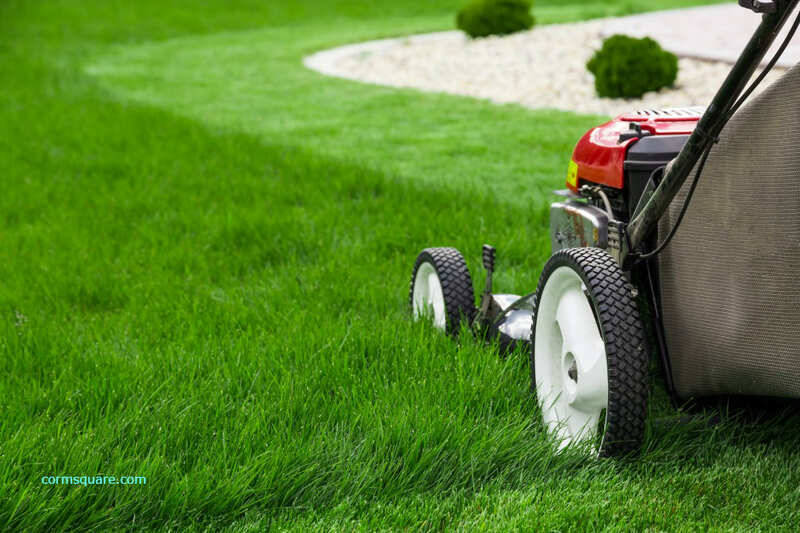
One of the most important aspects of lawn care in the spring is mowing your lawn, and it’s essential to understand the best practices for doing it. Mowing your lawn regularly helps to promote healthy growth, improve its appearance, and reduce weed growth.
The optimal mowing height for your lawn will depend on the type of grass you have. Different grasses have different growth habits and require different mowing heights to maintain their health and appearance.
The table below shows the suggested mowing heights for the most popular grass types in El Paso:
| Grass Type | Mowing Height (inches) |
| Bermudagrass | 0.5 – 1.5 |
| Buffalograss | 2 – 3 |
| Zoysiagrass | 1 – 2 |
| Seashore Paspalum | 1 – 2 |
| Texas Bluegrass | 2 – 3 |
Always remember to:
- Sharpen and clean your lawn mower blades.
- Follow the rule of one-third (never removing more than one-third of the grass blades’ length).
- Never mow after watering your lawn.
- Use a mulching mower to leave the grass clippings as mulch.
You can also hire a lawn mowing service, which costs an average of $50.
7. Outsmart Weeds
As spring arrives in El Paso, Texas, you must start thinking about weed control in your yard. Weeds can quickly take over and ruin the appearance of your property, but there are steps you can take to prevent them from becoming a problem.
One of the most effective ways to control weeds is using pre-emergent herbicides that interrupt weed seeds’ growth process. By applying them in spring, before weeds have a chance to grow, you can prevent them from becoming a problem in summer. You can also apply post-emergent herbicides that affect weeds that have already germinated.
There are two types of herbicides: selective and non-selective. Non-selective herbicides work on a wide range of weeds and non-weedy species (including your grass), while selective herbicides target only specific types of weeds. So if you can ID the weed, you have a better shot at getting rid of it with a targeted treatment. Common weeds in Texas include:
- Dandelions
- Creeping charlie
- Clover
- Thistle
- Crabgrass
8. Aerate the Lawn
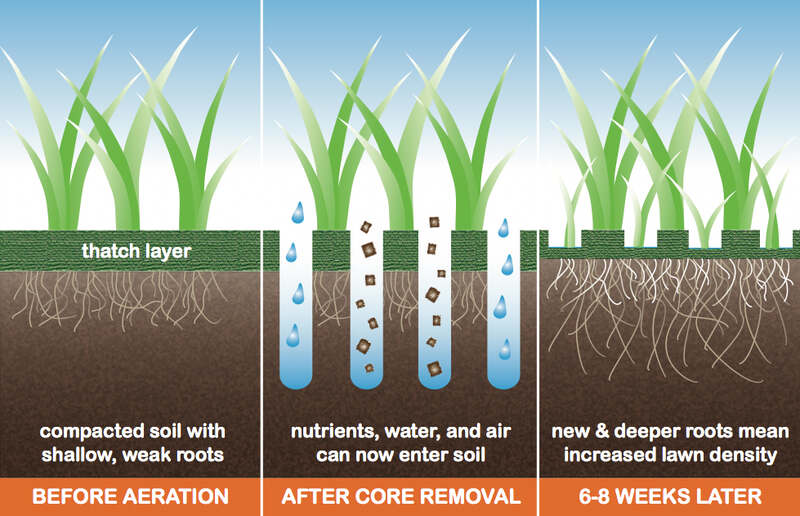
Aerating is the process of creating small holes in the soil to allow air, water, and nutrients to reach the roots of your grass more easily. Even though El Paso soil is primarily sandy and won’t compact easily, it still needs to be aerated yearly or in alternating years due to foot traffic and gravity.
Late spring is the best time to aerate your lawn, as this is when warm-season grasses like Bermudagrass and Zoysiagrass are actively growing. However, if you have cool-season grass like Texas bluegrass, it’s best to aerate in early spring or early fall.
You can check our guide if you want to know how to aerate your lawn yourself.
Pro Tip: To know whether your soil is compacted, perform the screwdriver test. Push a screwdriver into the ground; if it’s difficult to push, the soil probably needs to be aerated.
9. Dethatch Warm-Season Grasses
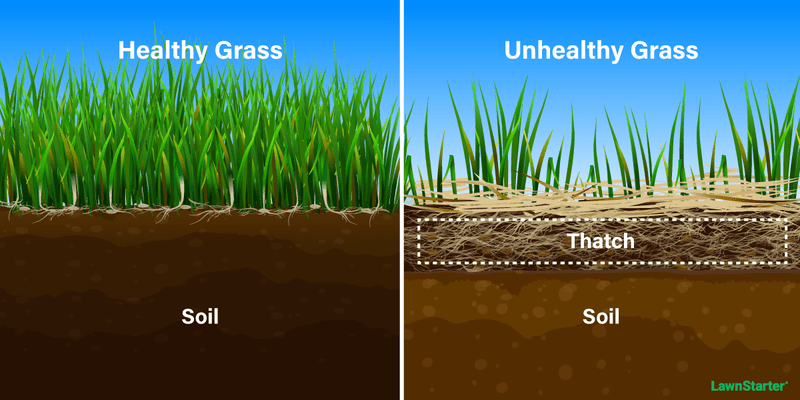
Thatch is a layer of dead grass, roots, and other organic material that accumulates on the surface of your lawn. A thin layer of thatch is beneficial for your lawn, as it helps retain moisture and nutrients. However, if thatch grows too thick, it can suffocate your lawn and invite pests to make themselves at home.
Dethatching is the process of removing this layer of thatch from your lawn. The best time to detach for warm-season grasses is late spring to summer, while for cool-season grasses, you should wait until early fall.
Note: Zoysia and Bermudagrass are prone to thatch build-up and may require dethatching more frequently than other turfgrasses.
10. Overseeding is Key
Do you dream of having a thick, lush, and vibrant lawn all season long? If so, then you may want to consider overseeding. Overseeding is the process of spreading grass seed over an existing lawn to help thicken it up and fill in any bare or thin areas, which can help promote a healthy and attractive lawn.
The best time to overseed warm-season grasses in El Paso is in the spring when temperatures are warming up, and your grass is starting to come out of dormancy. However, if you plan on overseeding your Bermudagrass with perennial ryegrass, it’s best to wait until fall.
Here are a few extra tips:
- Don’t overseed if you have applied herbicides.
- Overseed after aerating and dethatching for optimal results.
- Add enriched topsoil before overseeding.
- Fertilize after overseeding.
- Avoid mowing afterward.
11. Pest Proof Your Lawn
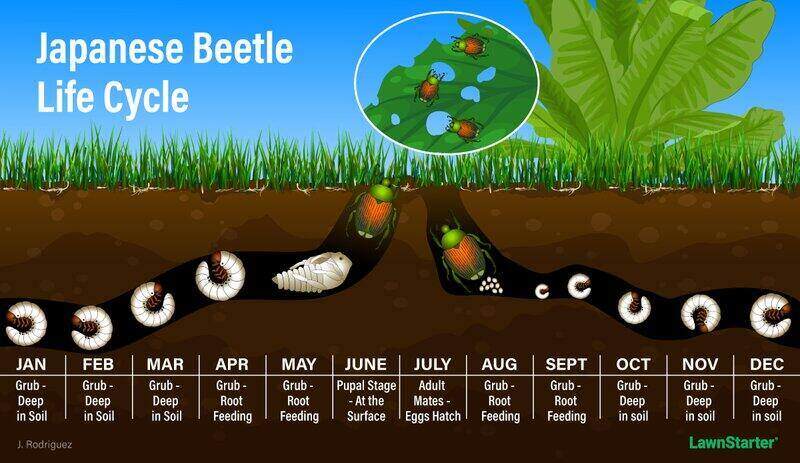
Spring is a season of renewal and growth, not only for your lawn but also for pests. Many pests, such as grubs, reproduce during late spring or early summer, which can lead to an increase in infestations. Here are a few signs you may have a pest infestation:
- Brown or yellow patches of grass that don’t respond to watering or fertilization
- Chewed leaves or stems on plants or grass
- Holes or tunnels in the soil
- Unusual activity from birds or other wildlife
- Presence of moths
One effective way to get rid of pests is to use pesticides. Chemical pesticides can be effective in controlling many types of pests, but they can also be harmful to beneficial insects and wildlife. Organic pest control alternatives, such as beneficial nematodes and milky spore, can be just as effective and less harmful to the environment.
Warning: Choosing the right type of pesticide for the specific pest you’re dealing with is essential. Different pesticides are designed to control different types of pests, so read the label carefully and follow the instructions closely.
FAQ About Spring Lawn Care Tips
El Paso is located in the desert, and grass requires a lot of water to thrive. So it may not be the most sustainable choice in a region with limited water resources. Fortunately, several landscape alternatives to grass are well-suited to El Paso’s climate, such as:
● Xeriscaping
● Ground covers
● Clover lawns
● Rock gardens
● Hardscapes
In general, waiting until your grass has grown to at least 2 inches in height before you start mowing is a good idea. This will ensure the grass is strong and healthy enough to handle being cut.
It’s also important to remember the “rule of thirds” when mowing your lawn in spring. This means you should never cut more than a third of the length of the grass blades in a single mowing.
The answer is no. In fact, according to El Paso’s Water Conservation Ordinance, watering your lawn every day is not only wasteful, but it’s also illegal. Violating these restrictions can result in fines ranging from $50 to $500, so following the guidelines is vital.
Aim to water it no more than three times a week. This is enough to keep your grass healthy and hydrated without wasting water or violating local ordinances. You can also ensure you’re using water efficiently by watering your lawn early in the morning or late in the evening when evaporation rates are lower.
Call in a Professional for Help
As a resident of the Sun City, you know that the warm climate and arid conditions can present unique challenges when caring for your lawn. But with the right knowledge and approach, you can achieve a beautiful and healthy lawn that enhances the beauty of your home.
While the tips presented in this article can help you achieve a beautiful green lawn, we understand that it may seem like quite a task, so consider hiring a top-rated LawnStarter lawn care pro. These experts know the ins and outs of caring for lawns in El Paso and can help ensure that your lawn thrives all year round.
Main Image Credit: Lawn mower / Pxhere
